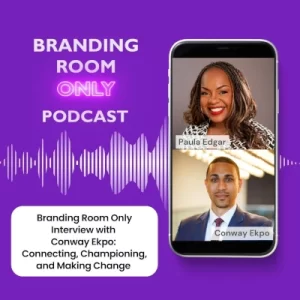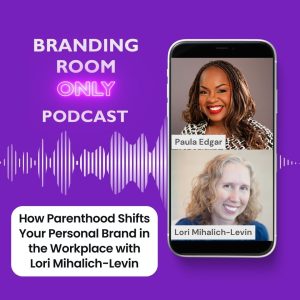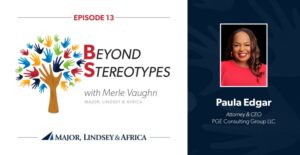5 Best Practices for Successfully Engaging an External DEI Partner
A consultant can help an organization solve some of its most complex challenges. As a diversity, equity, and inclusion (DEI) consultant, organizations engage me to help with a variety of issues and I often collaborate with internal diversity stakeholders including CEOs and leadership teams, Chief Diversity Officers, human resources leaders, and employees who convene to advance diversity equity and inclusion in their organizations. Depending on where the organization is on its diversity journey when they begin its search for a DEI consultant, needs will vary.
For example, as a new initiative is being considered, a consultant can help leadership understand in which direction it needs to move. A consultant can also be objective and provide third-party insight into the value and process of addressing diversity concerns. This initial stage becomes the foundation for the diversity effort and helps build commitment from leadership. The following are some of my observations and recommendations on best practices for hiring and engaging a diversity, equity, and inclusion consultant.
1. Preparation
Once the need for a DEI consultant is determined internally, there are a few steps that should be completed prior to reaching out for referrals. Collaborate with stakeholders internally to either develop a Request For Proposal (RFP) or a proposed scope of work. This document should include:
- A description of the organization and where they are in the DEI journey (just beginning or further along);
- What the organization wants to accomplish;
- Who the point person will be;
- Who the participating stakeholders will be;
- What is the perceived timeframe (beginning the work, process, and completion); and
- What is the budget range they have in mind?
While many organizations don’t want to provide their budget upfront, it actually does make it easier for the consultant to understand the potential scope. Putting together proposals is especially challenging when there isn’t clarity and transparency from the client.
2. Communication
It is helpful to speak with several potential consultants when thinking about the scope. At a minimum, it’s also a best practice to have an outline in mind as to what you would like the content to be in terms of dialogue. This can always shift as you continue to have conversations, however, it’s better to be prepared upfront rather than begin a conversation with a consultant by simply saying we need help. The consultant will have questions right away, such as what kind of help do you need? Is it an assessment? Is it training? Is it both? Who is on board? Is this employee-driven or leadership-driven? If it’s employee-driven, does it have leadership buy-in? If it does not yet have leadership buy-in, it’s important to communicate this so that the consultant can understand where you are on your diversity, equity, and inclusion journey. This information helps them reflect and think about the possible scope. Often, in situations where leaders aren’t involved, the consultant ends up needing to do far more work to help the people who have reached out. In other words, the consultant will need to incorporate making the case for commencing the DEI initiative at this time into the scope of work.
If your outreach is being triggered by employee activism, client requests, an EEO complaint, or another internal incident, make sure that is communicated to the consultant before engaging them, as it often impacts the scope. For example, if this is in response to an issue, emotions tend to be higher, and sometimes there is resistance. It’s best to think about this in advance. As a best practice, any engagement should have a confidentiality clause within the proposal. I routinely sign non-disclosure agreements (NDAs) which allow me to access information and data in advance so I can efficiently plan the scope of the project. This helps avoid any confusion or additional issues later on.
3. Expectations
It’s important to be clear with any consultant about what results you’re looking for at the end of the engagement. For example, if it’s a short-term engagement, and it only includes training, say that. It’s okay to say that this is step one, and perhaps you might be doing this for the current fiscal year and hope to do more in the next budget. Maybe you just want to start with unconscious bias training, in order to prep the organization for DEI work. Make sure you share this information with the consultant because it can really help to have that end result in mind when they create content and communicate with any stakeholders. Additionally, if you’re thinking about multi-year work, that’s important information too. For example, when creating assessments, you want to make sure that the questions are appropriate for a year-over-year review. So, you might create a slate of 10 questions for the diversity, equity, and inclusion survey, but then in order to maintain the integrity of that methodology, rather than changing the questions because of something that might have happened recently, you could create addendum questions so that they don’t interrupt the integrity of the data collection year over year.
Also, be very clear, to the extent that you know, as to how often you would like to be briefed on project status, and with whom. Will the stakeholders who have connected in order to engage with the consultant be the working group that works on whatever the DEI project is? Did they need to be briefed? Is the briefing only with leadership, or does it need to be an all-staff briefing that occurs? Or is it a briefing that happens with the board, or even with clients? Think about these questions in advance, so that these items can be incorporated into the scope, and everybody is clear about the process and the outcome. If the engagement requires reporting, and in order to align with company culture you have specifics that you would like included, share that as well. For example, if you have a PowerPoint template for reporting, a particular logo you want to be used, or a color scheme that you prefer, make sure you provide your consultant with these resources. While these might seem like details that don’t need to be addressed in advance, not having these details can become challenging and time-consuming when working with clients.
4. Participation
Participation would include not just the stakeholders who are going to work with the consultant. It would also incorporate whether or not the scope includes things such as interviews, focus groups, or listening sessions? Do the employees expect to have their perspectives incorporated? If so, that should be addressed. After the “racial reckoning” in 2020, many employees drove action internally. Other organizations wanted to silo diversity, equity, and inclusion efforts — which is the antithesis of inclusion. This created additional internal challenges by not asking (asking, not mandating) for employee engagement. Therefore, any expectation of engagement should be reflected on, thought about, and communicated to any consultant that you work with.
5. Project-based approach
Many consultants work on a project basis with a determined scope based on a response to an RFP or a series of conversations. Project-based work should include the number of hours included and specific deliverables. The client should expect to be billed if additional requested services expand the scope or exceed determined hours.
Engaging a consultant is often like dating; there needs to be compatibility in order to proceed with a productive working relationship. Make sure that you are selecting a consultant with whom you connect. It’s critical to have a consultant whose expertise and temperament are ones with which you will be able to align. When done properly, the consultant(s) will try to immerse themselves within your organization and have a better understanding of the culture in order to effectively collaborate and support. This is best done when there is mutual synergy because of the often challenging nature of the work. DEI is change management work that can be uncomfortable. Success requires cooperation, transparency, and vulnerability.
If you’re looking for diversity education, inclusive leadership coaching, and/or support with your diversity, equity, and inclusion strategy, reach out to me at https://www.paulaedgar.com/news/#contact.
Are there other questions that you have about engaging a DEI consultant? Send me an email with your questions or suggestions on what I should address in Part 2!
All Rights Reserved PGE Consulting Group LLC 2022 | Reprint permission requests to [email protected]





